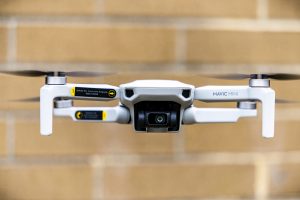Milton Keynes 5G Mobility Service: Transport and Security for the Future

Following the grant of a £4 million fund for an expansive 5G mobility service project in Milton Keynes, Housing Industry Leaders catches up with Brain Matthews, head of transport innovation, to discuss the aims of the project, improvements to security at venues, and how COVID-19 can be used as an advantage in development plans.
The town of Milton Keynes has been the heartbeat of recent 5G developments including the recent 5G accelerator programme. The latest boost into the town has been introduced to expand mobility services in the area.
The project will be trialled around the campus of MK Dons football club, which offers lots of space to develop different types of mobility services.

Brain Matthews, head of transport innovation, Milton Keynes Council
Over the next 12 months, the project will be testing autonomous vehicles that use 5G connectivity. They will utilise low latency, super-fast signals to see if that can support the acceleration of commercial transport services.
The project offers a wide variety of mobility service projects, including four-seater driverless pods, 10-seater driverless shuttles, remote-controlled taxis and freight delivery robots. Cutting-edge security drones will also be developed.
Brian told Housing Industry Leaders why Milton Keynes is the perfect place for this project. He said: “We want to test these products to the limit in a safe environment which the stadium offers.
“Our city centre has over 300,000 journeys a day, many of them are taken by car, which detracts away from people being able to walk and cycle. If we can start replacing some of those trips with driverless shuttles, that would be a big positive.”
AI and 5G paves the way for improved security
Recent years have seen multiple breaches of security, most notably at sports events and concerts. New security drones operating on the 5G network will offer high resolution imaging to detect suspect behaviour.
We can link the video footage through the 5G network so we get masses of high quality video
Brian explained: “There are two aspects to the security side of the project: one is the efficiency in which we can send remote vehicles out with drones on them to do night time surveillance and general security. Secondly, we can link the video footage through the 5G network so we get masses of high quality video. That enhances productivity and use.”
Looking ahead to the future, there are hopes that the project will plant the seed for future security measures, offering viable options to build on the platform they are currently creating.
Brain told Quadrant: “We want to link it to potential AI capabilities. So if these high quality 5G connections can start detecting the behaviour of people – such as the telltale signs when people are up to no good – we can then start recognising that type of behaviour or recognising suspicious things early. Through machine learning, we can be more responsive to risks before they happen.”

c. Harrison Kugler. Unsplash.
COVID-19 offers an opportunity for the project
COVID-19 has had huge impacts on mobility services. However, with the development of new technology, there is a sense of opportunity following on from the virus. Brain described the difficulties facing the project due to the pandemic but expressed some optimism for the future.
The new tech might help us manage how to respond to pandemics in the future
He said: “The new tech might help us manage how to respond to pandemics in the future because the 4 seater pods can, in reality, turn to one person pods. You’ve not got a driver so these can be self-isolated vehicles, so they could be used in that respect.”
The actual production of the shuttles can be designed with a pandemic in mind, making use of space provided in the shuttles. This is hoped to ease public opinions about travel on public transport in the future.
